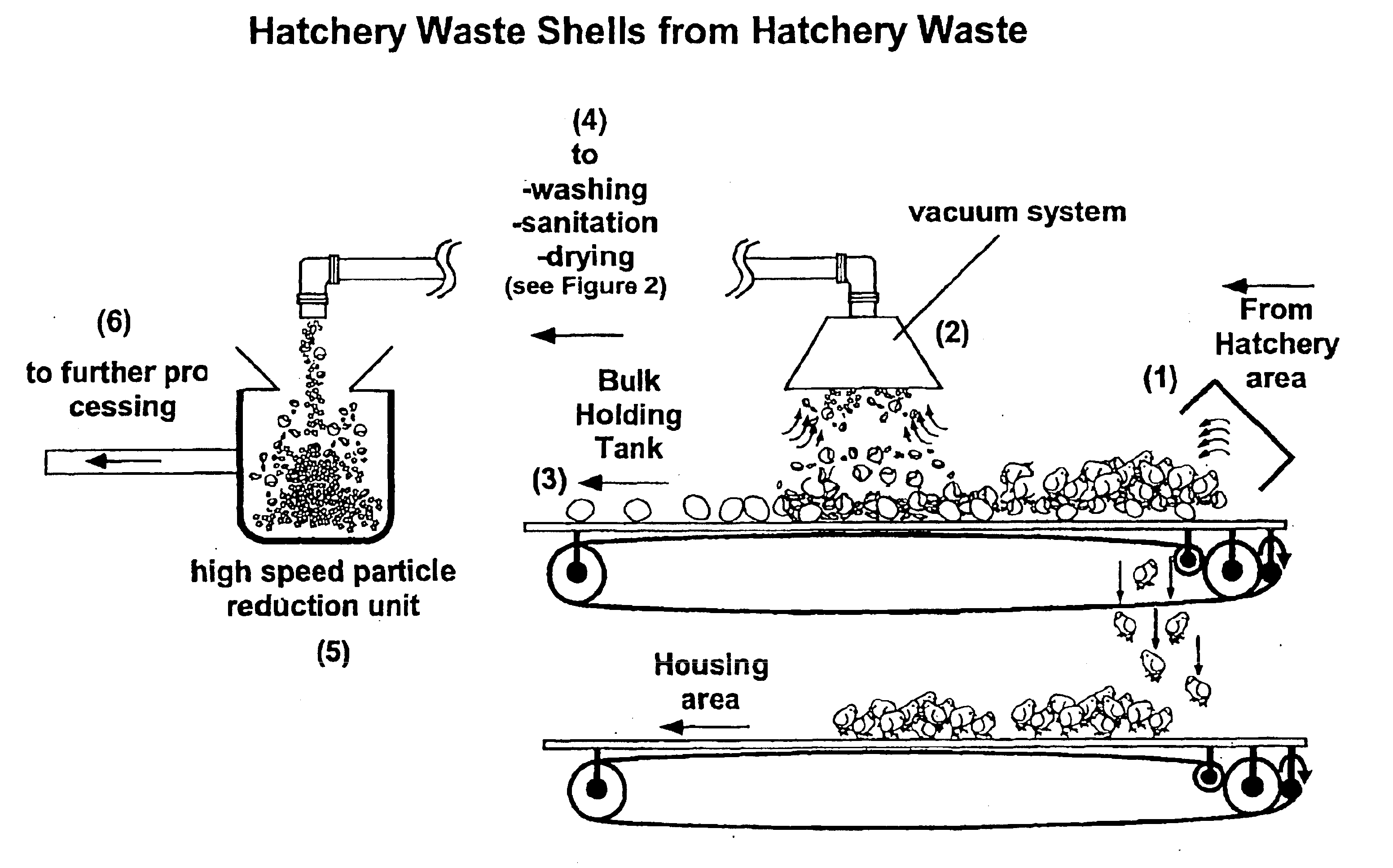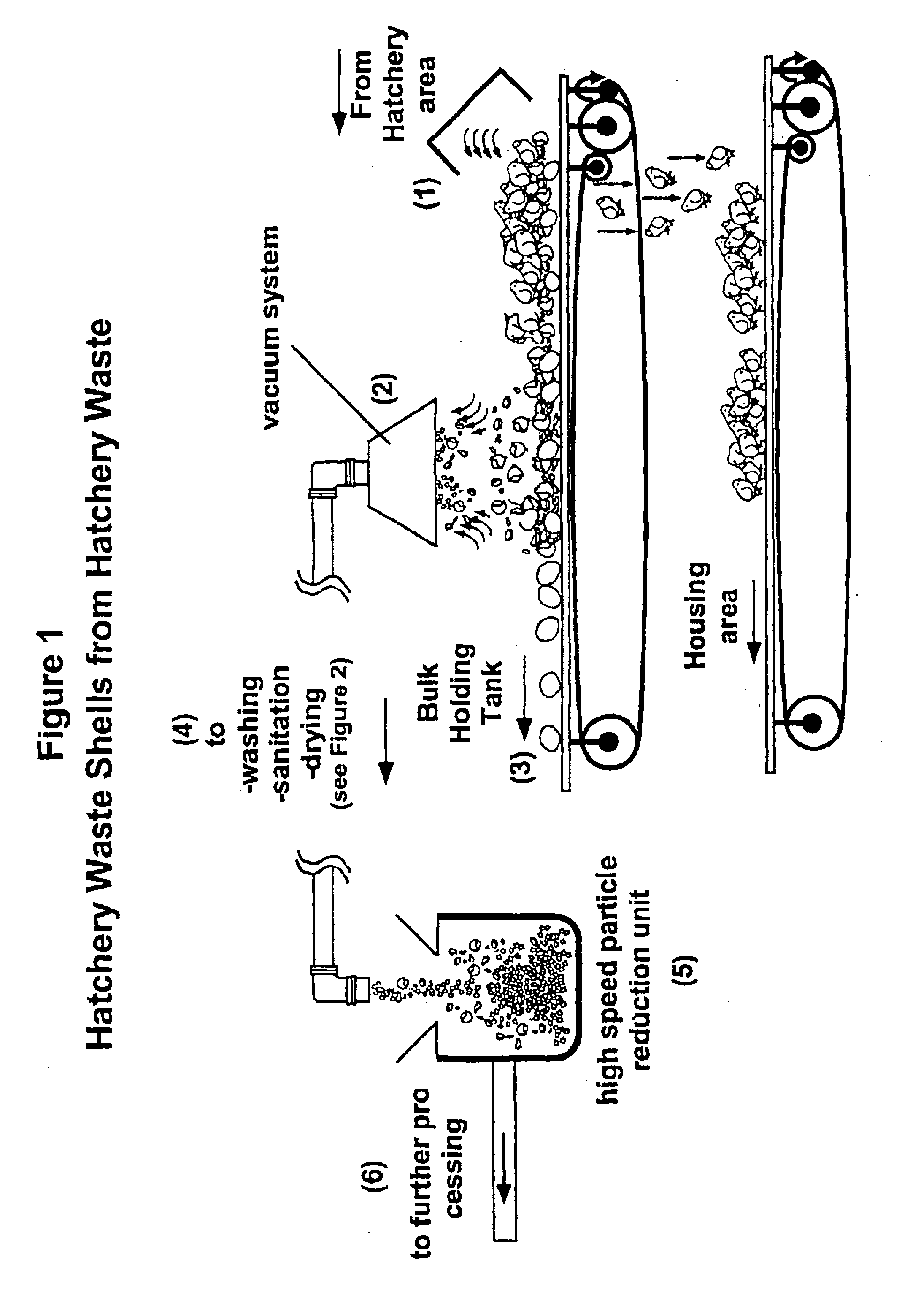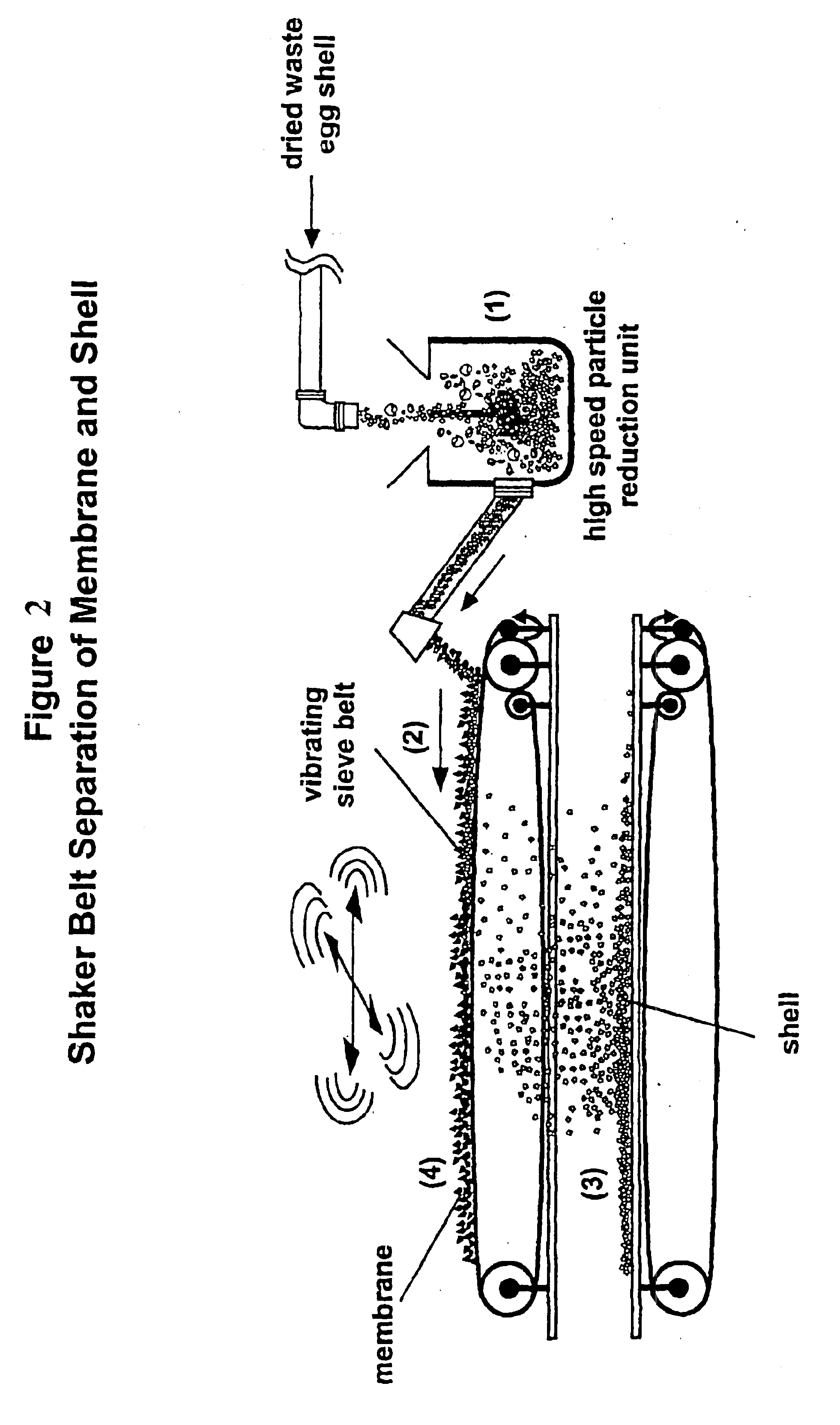Hatchery eggshell waste processing method and device
a technology of egg shell and processing method, which is applied in the direction of food shaping, grain treatment, peptide/protein ingredients, etc., can solve the problems of difficult separation of shell and membrane, high cost of collagen based products, and difficult handling of hatchery waste, so as to reduce the impact of environmental impact and reduce the particle size , the effect of reducing the particle siz
- Summary
- Abstract
- Description
- Claims
- Application Information
AI Technical Summary
Benefits of technology
Problems solved by technology
Method used
Image
Examples
Embodiment Construction
[0044]The foregoing and other objectives of the present invention will become more apparent from the detailed description given hereinafter. However, it should be understood that the detailed description and specific examples, while indicating embodiments of particular interest, are given by way of illustration and example only, since various changes and modifications within the spirit and scope of the invention will become apparent to those skilled in the art from this detailed description.
[0045]The present invention will be described herein below with reference to the drawings appended hereto.
Egg Waste Processing
[0046]In a standard egg-breaking plant, egg trays are placed on the breaking machine where they are automatically broken. A combination of mechanical and pneumatic equipment processes the eggs quickly and efficiently. Washing and breaking is carried out automatically in-line. The liquid egg fraction is automatically separated from the waste eggshell. From here, shell mater...
PUM
| Property | Measurement | Unit |
|---|---|---|
| thickness | aaaaa | aaaaa |
| particle sizes | aaaaa | aaaaa |
| particle sizes | aaaaa | aaaaa |
Abstract
Description
Claims
Application Information
 Login to View More
Login to View More - R&D
- Intellectual Property
- Life Sciences
- Materials
- Tech Scout
- Unparalleled Data Quality
- Higher Quality Content
- 60% Fewer Hallucinations
Browse by: Latest US Patents, China's latest patents, Technical Efficacy Thesaurus, Application Domain, Technology Topic, Popular Technical Reports.
© 2025 PatSnap. All rights reserved.Legal|Privacy policy|Modern Slavery Act Transparency Statement|Sitemap|About US| Contact US: help@patsnap.com



